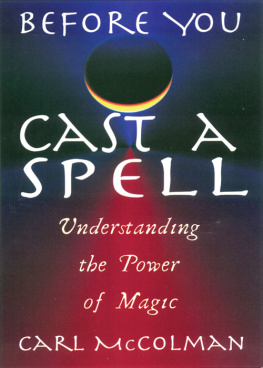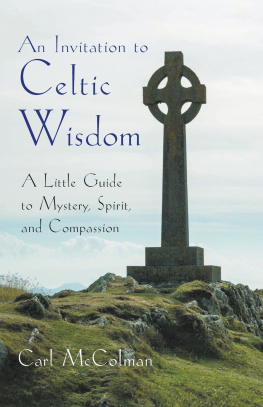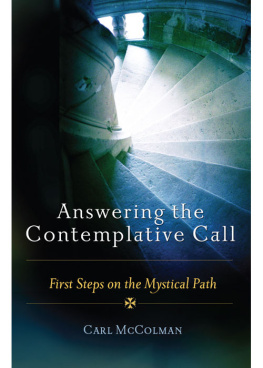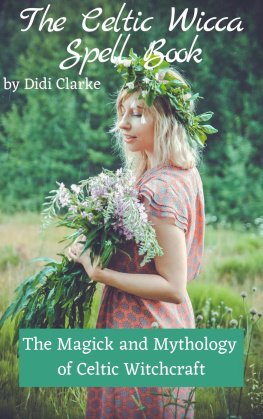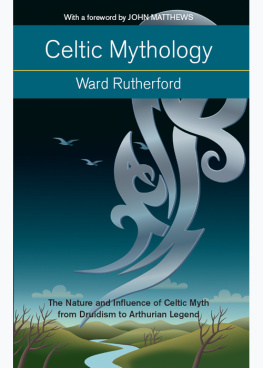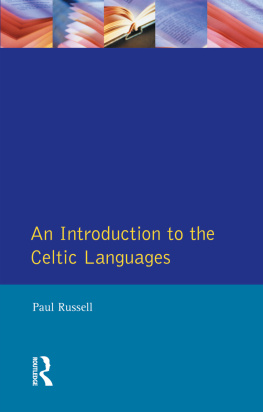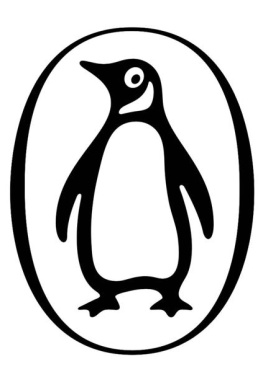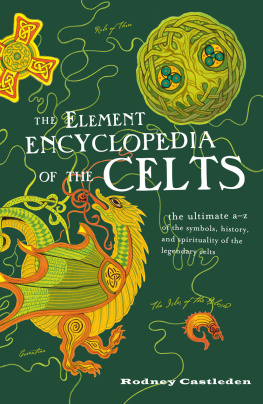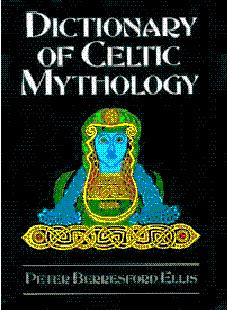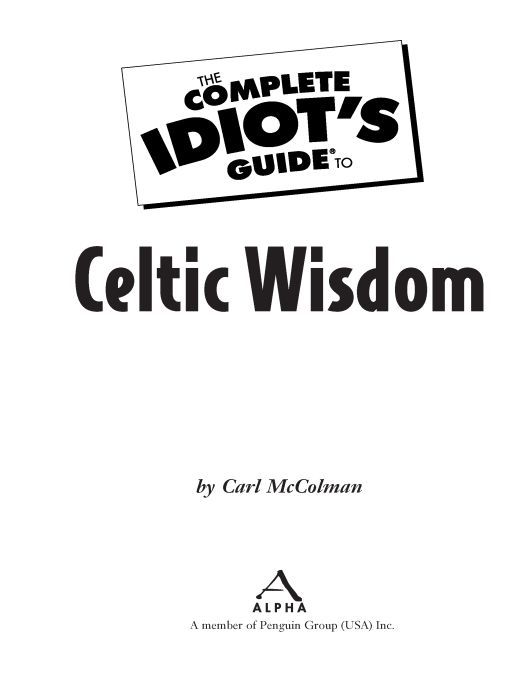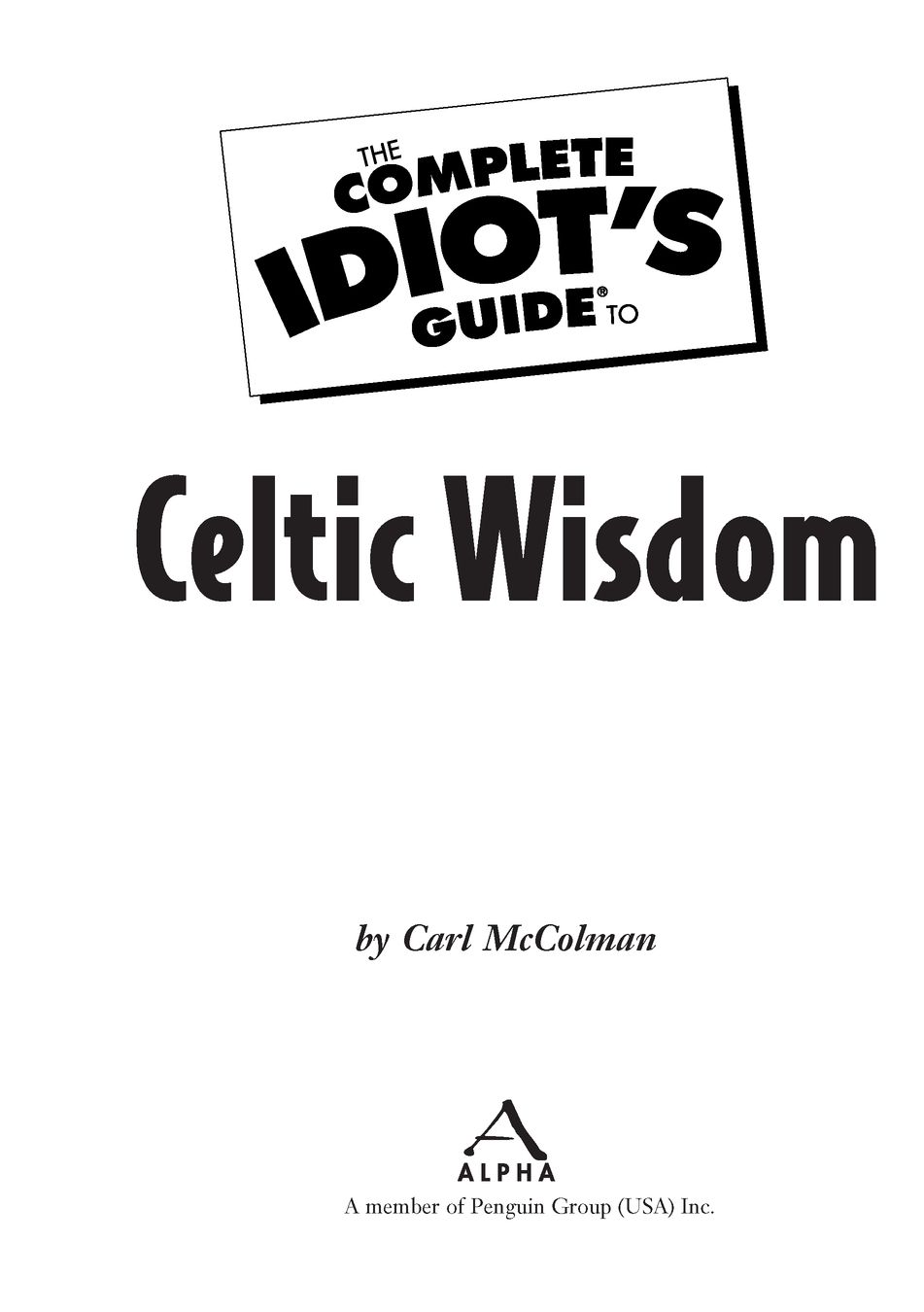Table of Contents
For John, Marcia, and BethAnn.
Foreword
On a high blanket bog in the west of Ireland, a gnarled thorn tree stands near a narrow track. Motorists use that road sometimes, cutting from one village to the next, but more commonly only thin-legged shaggy sheep traverse its rough surface. You could pass the little tree without noticing it among a cluster of granite boulders, but if you hike over to it and look carefully, you see a subtle sparkle: silver coins secreted around its roots, offerings to the spirits of the bog.
In the midlands, where a great monastic center once hid among the sharp ravines that cut the rolling landscape, another tree grows from the center of a natural spring. From it hang masses of clooties, bits of cloth torn from scarves or cut from spools of ribbon. So many offerings twist around the tree that its bark is almost invisible. Nearby, another treean ash, like its companiongrows beside a second holy well. Its offerings, like the bog-stunted thorn, are silver. Wood has almost closed over old English sovereigns, and bright new euros jut from the diamond-pattern bark.
On the islands southern coast, a craggy rock looks out from a heathery hillside. Steeply below, the blue ocean dances onto a thin, white strand. From a certain angle, the boulder looks like a weathered ancient face. Up close, you find that flowers and bits of bright rock fill its every wrinkle.
The ancient Celts saw nature as alive, vibrant with spirit. Even today, that consciousness has not been lost in the ancient Celtic lands. You can still find farmers who point out faery rings and artists who practice the old magic of transformation. And on certain days, in certain weathers, you feel sure the old gods still inhabit the faery mounds, coming forth to tempt mere mortals with the bliss of otherworldly love. The old Celtic lands hold magic that reveals itself to the reverent seeker.
But the wisdom of the Celtic way does not require residence in, or even visits to, the cultures traditional lands. Those who yearn for a spiritual vision that embraces the living earth feel the pull of Celtic wisdom no matter where they live. The Celts were once so rooted in place that a single word in Irish (tuath) meant both people and land. It is one of historys great ironies that such fiercely local tribespeople have been so scattered that today no continent lacks a Celtic presence. In their new homelands, the people of the Celtic diaspora dream of knowing their place again.
For the people of that diaspora and for Celts of the heart, Carl McColman presents the essence of ancient Celtic culture and suggests its applications in todays world. This comprehensive but concise guide emphasizes the variations and ambiguities inherent in the Celtic way without allowing complexity to become confusion. For both new sojourners and those well traveled on the Celtic path, McColman is an excellent and sure guide.
Times arrow flies ever forward; the Celts will continue both to scatter and to dream. And in doing so, they will share with natives of other lands their cultures special vision: that this is a world of edges as well as centers, that change is the only constant, that opposites combine to make wholeness, and that the special beauties of each moment in each place are to be embraced, for they are what sustain our souls. This book offers you a steady and steadying glimpse into that profound wisdom.
Patricia Monaghan
Patricia Monaghan is the author of The Red-Haired Girl from the Bog: The Landscape of Celtic Myth and Spirit and the editor of Irish Spirit: Pagan, Celtic, Christian, Global. She is a member of the interdisciplinary faculty at DePaul University in Chicago, where she teaches literature and environment.
Introduction
The Celtic world is a world of contradictions. On the one hand, it is a marginal realm: Only a few small regions in Western Europe are Celtic, meaning home to those who speak a Celtic language or identify as a Celtic nation. And yet tens of millions of people throughout the world take pride in the Celtic blood coursing through their veins and look to the Celtic lands for inspiration in spiritual and cultural ways. Politically, the Celts ceased to be a major power when Caesar conquered Gaul more than 2,000 years ago, and yet to this day Celtic ideas and philosophy continue to influence countless numbers of peoplea true embodiment of the proverb The pen is mightier than the sword! And although Celtic spirituality has often been overshadowed by the various forms of Christianity embraced by Celtic people, the heart of Celtic wisdom lies in an ancient mysticism based on reverence for the earth and devotion to the spirits of the land and the tribe.
You might have picked up this book for any number of reasons. Perhaps you feel a call to the ancient ways of Celtic shamans, druids, and pagans. Or you might simply want to learn about the inner life of this ancient and proud lineage. Whatever your motivation is for seeking Celtic wisdom, this book can help you understand the basics and appreciate the special perspective of the Celtic tradition.
How to Use This Book
Celtic wisdom is a broad subject with many unique subcategories, so this book aims to give you an overview to help you understand the big picture. In the pages to come, youll get a taste of the many varieties of Celtic spirituality and an introduction to the vast and multifaceted realm of Celtic myth and legend. Youll also be invited to find ways to integrate Celtic wisdom into your own spiritual life, regardless of your religionor ethnicity. Hopefully, youll be inspired to explore the Celtic mysteries for yourself, through meditation, research, and personal ritual.
This book is divided into five parts:
Part 1, Welcome to Celtic Wisdom, introduces you to the Celtic people, their long and proud history, and the many types of spirituality and religion that have contributed to the growth of Celtic wisdom.
Part 2, The Three Paths, looks at the wisdomkeepers of ancient Gaul and their three ordersbards, seers, and druidsas a template for three different ways in which you can explore the Celtic path, here in the twenty-first century.
Part 3, Mythology and Lore, celebrates the vast treasure of Celtic wonders, tales, and legends, in which gods, goddesses, heroes, faeries, and ancestral figures live foreverproviding us with a glimpse into the teachings of the distant past.
Part 4, Further Steps Along the Path, shines a light on practical ways to make the Celtic path come alive in your own world. From the spiritual practices of the ancient Celtic shamans to the philosophical quest of the druids, to the allegorical mysticism of the knights of the Holy Grail, the Celtic world provides countless doorways to inner growth.
Part 5, Applied Celtic Wisdom, brings together a selection of real-world topics, from divination to ethics to the Celtic cycle of holy days, and explains how to integrate these practices into your own unique quest for the Celtic soul.
Extras
Youll find boxes in every chapter that provide helpful definitions, tips, cautions, and intriguing factoids to help you learn and understand more about the world of paganism.



